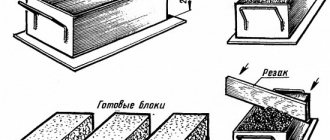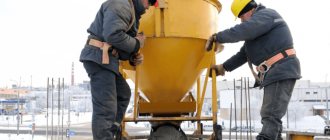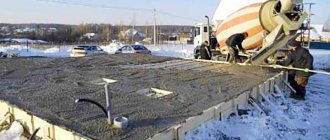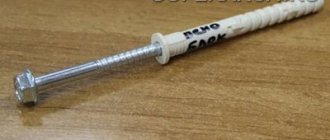The temperature of asphalt during laying primarily depends on the type of asphalt concrete used. Also, the type of asphalt mixture determines the scope and temperature range of asphalt heating required for asphalt paving work.
“If an asphalt concrete mixture contains a lot of crushed stone from durable rocks, its strength and rigidity increase, as a result of which the mixture is heated more before placement to ensure sufficient plasticity necessary for high-quality compaction.”
Laying asphalt, carried out in accordance with asphalt paving technology, requires mandatory adherence to temperature conditions, as this directly affects the quality of the road surface.
The following main types of asphalt concrete are distinguished, differing in temperature during installation:
- hot;
- cast;
- cold.
Each variety has its own temperature ranges that are permissible during work. The temperature of the asphalt during laying also increases depending on the percentage of crushed stone or gravel.
How hot asphalt laying temperatures change with different rock contents
| Type of asphalt by rock content | Temperature before installation | Temperature of asphalt during laying (during cooling) |
| A – 50-60% | 120-145°C | 120-100°C |
| B – 40-50% | 110-130°C | 110-90°C |
| B – 30-40% | 105-120°C | 105-85°C |
| G – sand from rocks | 105-120°C | 105-85°C |
| D – sand from sedimentary rocks | 85-110°C | 85-75°C |
Since the mixture loses temperature during the laying process, the material should be heated not to the minimum temperature threshold, but to average and maximum values, depending on the speed of asphalt paving.
If it's minus outside the window
At sub-zero temperatures, asphalt is laid using cold mixtures. This is a polymer asphalt obtained thanks to additives, due to which it is plastic and frost-resistant. Adhering to technology, the use of the composition requires the addition of bitumen thickeners. There are two types of cold mixtures used: fine-grained and sandy, fractions - 5 mm and 10-15 mm.
In extreme weather conditions it is very important to obtain a durable coating and this technology allows you to achieve this. The cost of the work is high, but cold modified mixtures are increasingly being used due to the ability to carry out work in snow and rain, as well as temperatures of + 60 °C.
Scope of technology application:
- coatings located next to the rails;
- spot repairs of highways and routes;
- access roads, parking lot coverage;
- preventive measures during road repair work;
- formation of a blind area in other cases.
Before work, the surface should be cleaned of excess moisture, snow and debris. Additionally, temperature control mechanisms are required.
At what temperature is poured asphalt laid?
Cast asphalt concrete is a hot mix asphalt and therefore requires heating before installation. The use of this material, like other hot mixtures, is possible in warm seasons at air temperatures from +5°C
.
- The average temperature of asphalt during laying (for cast hot mixes) is 220°C
. - Depending on weather and technological conditions, as well as on the composition of the mixture, heating before installation has a temperature range from 185 to 250°C
.
A special feature of cast asphalt is that there is no need for compaction, since the mixture independently gains strength as it cools. Therefore, this type of asphalt must be heated before laying with a smaller margin than conventional hot asphalt concrete.
Acceptable violations
Sometimes contractors violate road laying technology. The reason is the constant process of bitumen production and the terms of the contracts. The plant produces, contractors provide transportation equipment.
The quality and properties of the coating become worse over time, so it must be laid on the base as soon as possible. The weather is often unpredictable, and road workers often have to work in the rain.
Compliance with prescribed deadlines is another reason for non-compliance with the technological process. Otherwise, you will have to pay a high fine.
The process may be disrupted if the work is later redone under normal conditions. The quality of the work performed is checked.
Important!
In other cases, organizations are subject to a fine.
At what temperature is cold asphalt laid?
Cold asphalt concrete does not have the same characteristics as hot mixes, therefore it is used not for road surface construction, but for pothole repair and asphalting of pedestrian areas.
- This material does not require
heating before installation; it is enough to maintain about 20°C. - Can be used in late autumn, early spring, and sometimes in winter - down to -10°C
.
At the same time, the temperature of the asphalt during laying, if we are talking about cold mixtures, should not be too low. If raw materials have been stored in cold conditions, it is recommended to place them in a heated room before use. The application area can also be warmed up before installation to prevent the frozen base from cooling the asphalt mixture too quickly.
The main reasons for poor road quality
Important!
Failure to comply with the regulatory requirements of SNiP and GOST when carrying out repair work leads to poor condition of roads.
There are a number of main reasons for the deteriorated state of roads:
- when carrying out paving work during rain, water gets into the asphalt layers, which leads to the appearance of holes;
- savings on the emulsion mixture;
- the layer is laid of inadequate quality, which is why the crushed stone does not adhere properly to the old asphalt;
- replacing crushed stone with crushed brick, which leads to subsidence and collapse of the road surface;
- the use of asphalt of inappropriate quality and laying of insufficient thickness provoke the appearance of cracks and destruction.
We cannot exclude the fact of human negligence during the work, non-compliance with laying technologies in rain and snow.
What causes the temperature of asphalt to decrease during laying?
During the laying process, asphalt concrete cools down depending on the following factors:
- Air temperature - the lower it is, the faster the cooling occurs.
- Temperature of the base for installation - the colder the base, the faster the temperature is lost.
- Thickness of the asphalt layer - the smaller the thickness, the faster the asphalt cools.
- Laying speed – the longer the asphalt paving is carried out, the more temperature the asphalt concrete will lose.
Taking these factors into account will allow you to more accurately determine the desired heating temperature of asphalt concrete.
Modern requirements
SNiP specifies requirements regarding air temperature for work:
- for laying warm asphalt from -10 °C and above;
- in summer and spring, work is carried out at temperatures from +5 °C and above;
- in autumn from +10 and above.
It is recommended to carry out work in dry weather. SNiP contains a clause prohibiting the laying of road surfaces in snow, rain and blizzards. According to the regulations, it is impossible to carry out laying work on a damp, unprepared base.
Work can be carried out in light rain. For this purpose, cold and cast mixtures must be used.
conclusions
Average temperature of asphalt during laying
depends, first of all, on the type of asphalt concrete mixture:
- The temperature for laying hot asphalt is 110-130°C;
- Temperature for laying cold asphalt – does not require heating, about 20°C;
- The temperature for laying cast asphalt is 190-230°C.
You also need to take into account that during the asphalting process the mixture cools down for various reasons, so preheating must have a reserve.
In addition, the temperature of the asphalt during placement must be increased if the hot or poured asphalt contains a lot of crushed rock. The higher the content of strong and hard rocks, the more the mixture must be heated to obtain sufficient plasticity.
Installation materials
To complete the work you will need the following materials:
- Sand, screenings or PShchS
- Geotextile (optional)
- Crushed stone
- Bitumen (optional)
- Asphalt
Now let's talk about how to choose each of them correctly.
Sand, screenings or PShchS
They act as a cushion, that is, they provide a stable position, evenly distribute the weight of the top layers and prevent the asphalt from shrinking. Without a pillow, the coating will quickly become unusable - cracks and holes will form on it.
The pillow will require a lot of material, so it is better to choose something cheaper. Sand or screenings are fine.
If we talk about sand, we recommend buying epoxy sand. This is the most inexpensive variety. As an option, you can consider quarry sand, but it costs more.
You can find a detailed overview of sand mined in the Sverdlovsk region on the Sand for construction work page.
Crushed stone screening has one advantage over sand - it does not contain clay. The fact is that clay has the property of heaving (that is, increasing in volume under the influence of low temperatures). This can lead to destruction of the coating in winter. And screenings are a product of crushing hard rocks. Therefore there is no clay in it.
There are different types of screenings - granite, diorite, serpentinite, gabbro, marble. In principle, all of them will do; here the choice depends only on the price of the material and the cost of delivery to your site.
Well, there is one more important feature: the dropouts can be enlarged. In its mixture, along with small grains, quite large ones can be found. This is demonstrated in the photo below. It will be more difficult to level such a coating. Therefore, before purchasing, be sure to tell the seller why you need screenings, and ask them to bring you a fine fraction - 0-5 mm.
Please note that in regions where there is a shortage of hardwood, screening can be very expensive. In this case, it is more profitable to order sand. And vice versa.
Well, the last option is a sand-crushed stone mixture (SSH). It is cheap, but difficult to work with. The mixture contains both large and small grains, which complicates the leveling of the top layer.
Geotextiles
It will be required if cars will drive on asphalt. Geotextiles give the coating additional stability and prevent its shrinkage.
There is a huge amount of geotextiles on the market: gardening, construction, industrial, etc. They differ both in density and properties. For example, a garden variety is designed to improve soil fertility and protect against weeds. However, it is not designed for high loads.
You need to choose construction geotextiles with a density of 100 g/m2. This will be enough to equip a small parking lot or driveway to the site.
Crushed stone
It is best to take the granite variety, although diorite and serpentinite are also suitable. If significant loads will not be placed on the asphalt, you can save money and lay a layer of crushed limestone in the cushion.
We do not recommend using crushed marble for these purposes - it has low strength. On the other hand, this material is inexpensive and is quite suitable for constructing pedestrian paths. For example, it is the marble variety that is used for landscaping the city of Berezovsky, including as a base for asphalt sidewalks.
The universal fraction of stones for these works is 20-40. To create a more durable layer, you can declinch with small fractions (5-10, 5-20, 10-15). Large stones (larger than 20-40 mm) should not be taken - it will be difficult to lay them in an even layer.
Bitumen
It is advisable to apply bitumen impregnation between the layer of crushed stone and asphalt. Bitumen acts as a binder and provides additional traction.
There are several types of impregnation:
- Bitumen emulsion Consists of heated bitumen. This is the best option for processing the lower layers of the coating.
- Coal tar After hardening, the tar creates a durable protective layer that is not destroyed by oil and gasoline. This impregnation lasts for more than ten years. But for private construction such reliable material is simply not required.
- Acrylic polymers They are most often used for surface treatment of asphalt. They are highly resistant to wear and make the surface durable and elastic. Plus, acrylic additives come in color. Therefore, they are often used in landscape design to create original asphalt paths and platforms.
For laying asphalt, a road variety of bitumen (BND) is used. There are several brands of this material - from 40/60 to 200/300. The numbers indicate the degree of viscosity. The colder the region, the lower the grade should be. For example, in the southern regions of Russia, where the average temperature in summer is about 20-25⁰C, BND 60-90 bitumen is used. In the middle zone of the country, grade 130/200 is used. And in the northern part the 200/300 grade is used.
Asphalt
Well, the main component is hot asphalt. It comes in coarse and fine grain. The first is used for road construction; the lower layers of roads are made from it. As the name suggests, this material contains large grains (up to 40 mm). However, this variety is not required for landscaping the garden area. Fine-grained asphalt (with particle sizes up to 20 mm) is suitable for you.
Compaction process
Thanks to compaction, a structure is formed in the asphalt, guaranteeing high strength of the layer. This process leads to the following changes in composition:
- solid particles move closer together as the hardness of the material increases;
- squeezing air out of the structure leads to a decrease in porosity and increases the water resistance of the coating and its resistance to frost;
- in each unit of volume the number of connections increases, making the road surface reliable and durable;
- the ability to perceive temperature improves, compacted asphalt reacts less to cold or heat.
Let's sum it up
Each type of asphalt mortar has its own optimal installation temperature:
- for hot – 110-130°C;
- for cast – 190-230°C;
- for cold - about 20°C.
Various external factors cause the mixture to cool, so it is recommended to reheat it with reserve. The maximum permissible temperature is raised if the asphalt concrete contains a high percentage of rocky components (crushed stone or gravel). Only at a sufficiently high temperature will bitumen be able to penetrate into the smallest gaps between the filler so that it becomes possible to lay asphalt efficiently.
Technology of laying asphalt on old asphalt
This technology is used when it is possible to raise the level of the current asphalt concrete surface by at least 5 cm. Therefore, it is necessary to take into account all heights and junctions with other coatings. To apply the technology of laying asphalt on old asphalt, you need to adhere to the following algorithm of actions:
- Cleaning the base from dirt and dust;
- Dismantling of junctions with a width of 1 meter;
- Raising well necks to a new design level;
- Leveling layer of asphalt concrete chips or fine crushed stone;
- Spill of bitumen emulsion;
- Laying asphalt with a thickness of at least 5 cm.
This technology is very popular due to the fact that it is one of the most cost-effective methods of asphalt repair, since we avoid complete dismantling of the coating.
Why do they put asphalt in puddles?
Road builders also save on the surface itself—asphalt. It, like bitumen emulsion, is made from oil. But not every variety of this raw material is suitable for high-quality road laying. As a rule, builders do not check the quality of oil, hence the fragility of the coating.
Interesting materials:
How to water with boric acid? How to water garlic and onions in July? How to water garlic with salt? How to water garlic in open ground? How to water Decembrist in November? How to water a money tree in the fall? How to water a money tree after planting? How to water a Crassula money tree? How to water trees with ammonia? How to water trees after planting in the fall?











